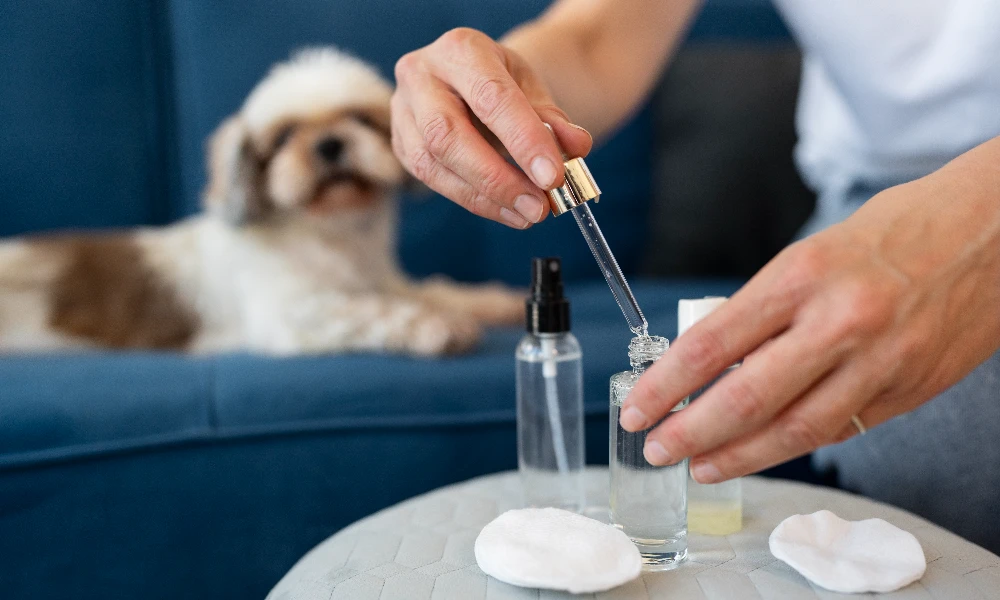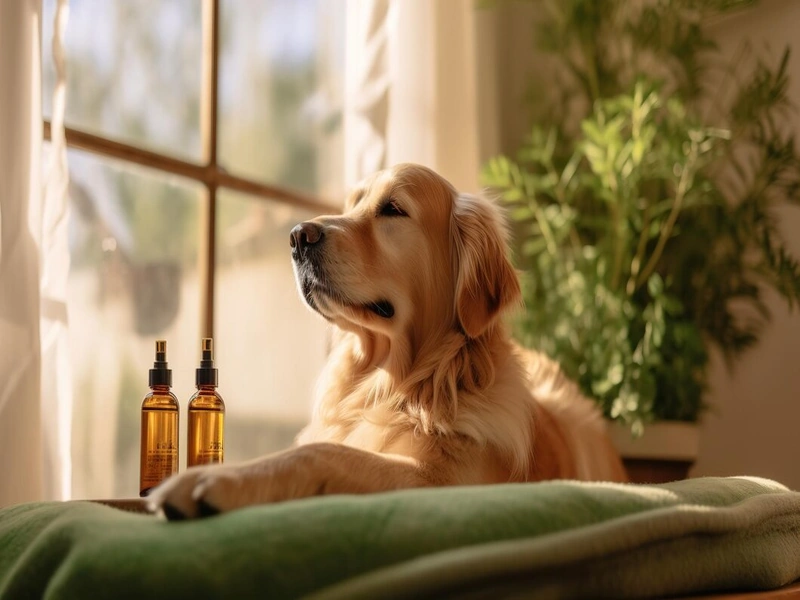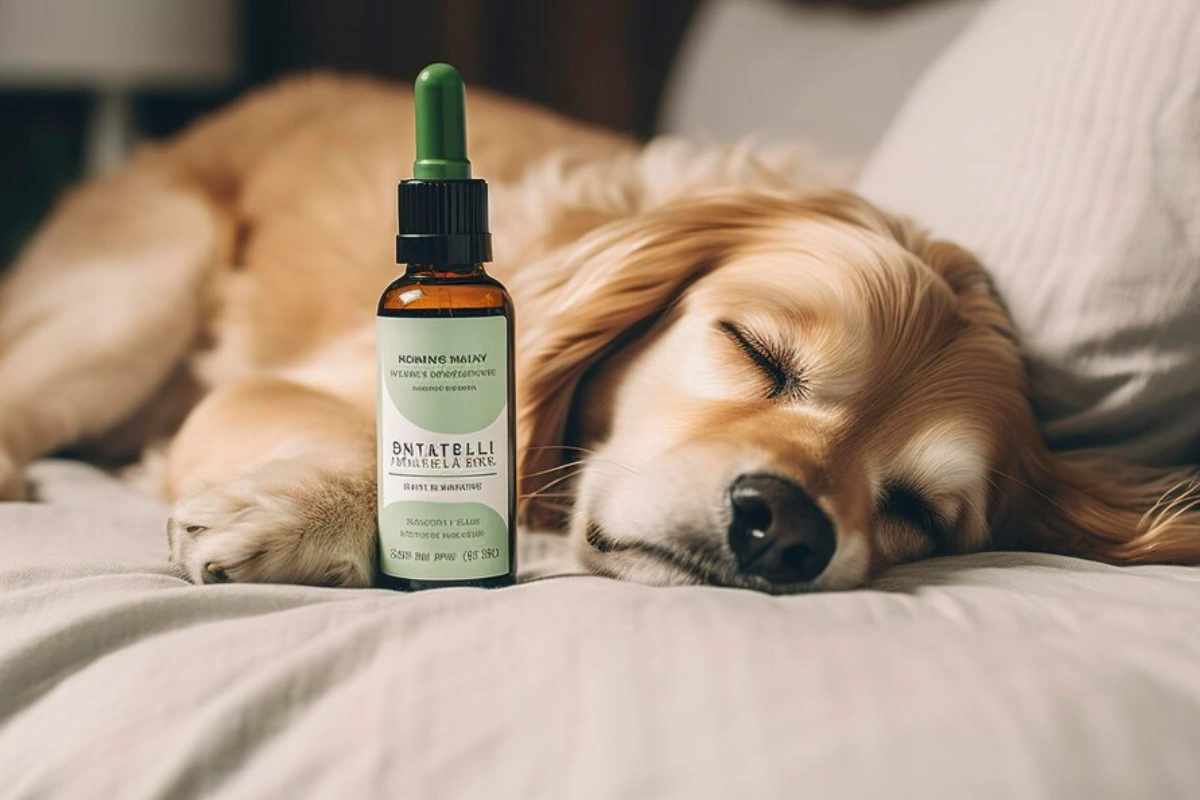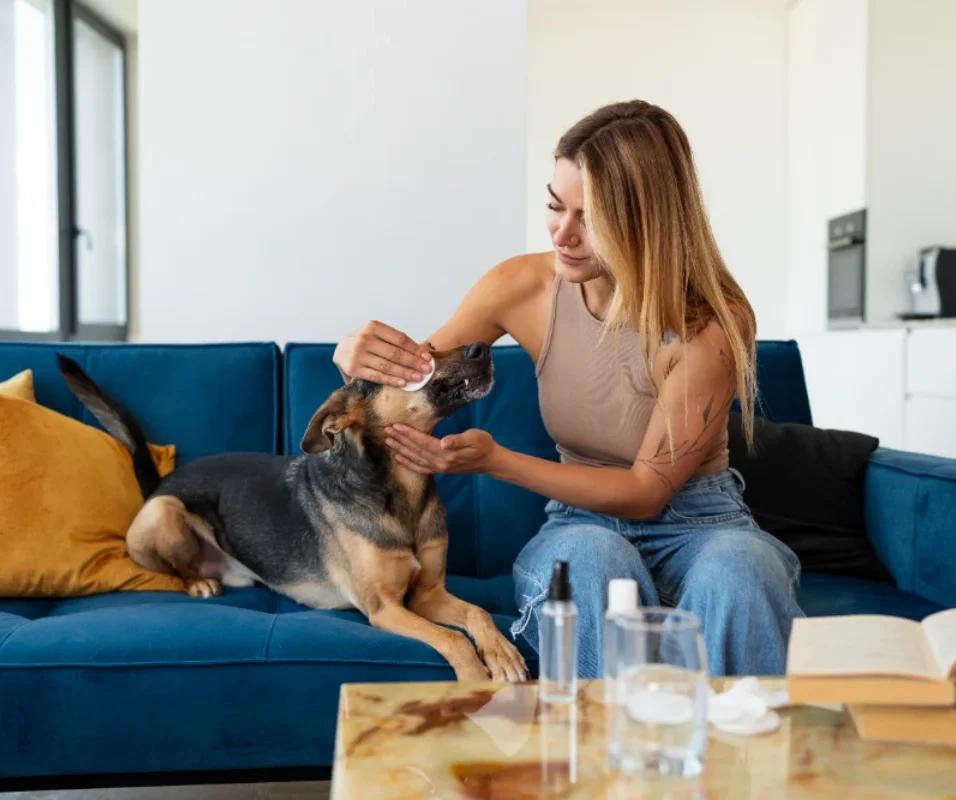Think essential oils are harmless for your dog? Think again—using them the wrong way could do more harm than good. Here’s what every pet parent needs to know.
Before bringing the oil into your house, ask yourself “Are essential oils safe for dogs?” Not all are made equal for your pet’s health. Let’s see some safer oils and keep the dangerous ones away from our pets.
In this whole guide, we are going to tell you which toxic and safe essential oils are, and then ways you can keep your dog safe from being exposed accidentally to them. Finally, learn how you can make your dog safe in case they might have to use these essential oils.
Are Essential Oils Safe for Dogs?
Essential oils can be dangerous to a dog if they are misused. Some of the pet-toxic oils include tea tree and wintergreen oils, which result in serious health issues for animals. Even if the oils are safe like lavender, they should only be diluted with the assistance of the veterinarian. With a different metabolic rate in dogs and sensitive noses, they are more prone to being affected by oil use. Always seek advice from your veterinarian before applying these oils directly into your dog’s environment or ensuring sufficient ventilation when they are diffused into the air.
What Are Essential Oils?
Essential oils have been a true concentrated plant extract in holistic medicine and aromatherapy since ancient times. Supporting the relaxation of stress, the easy removal of pain, and even an enhanced mood. Of late, they have been in popular application among humans. However, these oils raise another cautionary aspect of life for pet owners: their effect on pets.
Dr. Justine Lee DVM, DACVECC, DABT
“If your pet has been exposed to any toxic essential oil, please don’t wait for its first signs and symptoms to materialize your pet vetted ASAP”
Dogs, on the other hand, have a much stronger smell and a different metabolic mechanism than humans, so they more easily fall prey to the dangers of essential oils. While a scent may be perfectly relaxing for you, it doesn’t mean it’s right for your pet.
Essential Oils That Are Toxic to Dogs

Some of the essential oils are harmful to dogs. These might cause severe damage if swallowed, inhaled, or applied topically.
The following list comprises the most common oils known to be toxic to dogs and that can cause significant issues when taken into the body via ingestion, inhalation, or topical applications.
- Tea Tree Oil
- Wintergreen
- Cinnamon
- Citrus Oils (Orange, Lemon, Lime)
- Pine Oil
- Ylang Ylang
All the above oils have chemicals inside them that may make the dog react adversely from mild irritation to extreme toxicity.
Poisoning by Essential Oil in Dogs
- Vomiting
- Salivation
- Lethargy
- Tremors
- Dyspnea
- Severe liver failure in extreme cases
Are There Any Safe Essential Oils for Dogs?

Despite the risks certain oils may pose, many essential oils are safe to use on dogs when done so properly. The difference comes in proper dilution and careful administration. Some safe oils for dogs are listed below:
- Lavender
- Chamomile
- Frankincense
- Cedarwood
While these oils, diluted, can produce some mild effects – such as calming an anxious pet or reducing inflamed skin, they should be used strictly under the supervision of your vet. Even so, overuse or improper application can still cause adverse reactions.
Benefits of Safe Oils
1. Lavender
Calming oil is wonderful to help anxious dogs relax; wonderful stress relief for vet visits and thunderstorms. Its antibacterial properties support minor skin healing. Properly diluted, it promotes relaxation and emotional well-being.
2. Frankincense
A potent anti-inflammatory, great to keep joints healthy in a dog as well as helping his overall immune system to fight infections. It boosts the immune system, helping fight infections, and promotes cellular recovery. Its grounding scent also aids relaxation.
3. Chamomile
Wonderful for the skin when irritated; promotes soothing sleep in anxious or restless pets. Its anti-inflammatory and antimicrobial properties help heal minor wounds. The sweet scent provides comfort in stressful situations.
4. Cedarwood
It has both natural insect-repellent properties and also promotes skin health. It makes a dog coat look shiny and pest-free. It relieves itchiness and supports circulation for overall vitality. Its earthy scent calms anxiety and grounds nervous dogs.
How to Use Essential Oils Safely Around Dogs
While we’ve discussed the safety of essential oils for dogs, it’s crucial to be aware of the potential risks and how to act in case of poisoning. Applying essential oils may require caution to not danger your dog from the poisonous dangers. A few safety procedures are given below:
1. Diffusion Guidelines
- Low concentration Always use essential oils at low concentrations, especially when diffusing.
- Ventilation It should provide sufficient ventilation to the place so that your dog gets out of the room whenever it feels uneasy
- Monitor your dog to Stop using it if your dog sneezes, coughs, or leaves the area of the diffuser.
2. Topical Application
- Consult your vet Before applying any essential oils directly to your dog’s skin, consult with your vet.
- Dilution is Key It really must be said that dilution is of the essence and that one uses a carrier oil like coconut oil so the essential oils, which can be concentrated, do not irritate the skin and not even systemic toxicity.
3. Avoid Ingestion
- Tie up and avoid its access to dogs at your home.
- Even a small amount of ingested oil may be harmful hence, ensure oils are properly stored.
First Aid for Essential Oil Poisoning in Dogs
Accidental exposure to essential oils may be quick. If you think your dog has been exposed to an oil that’s toxic either through ingestion or contact, follow these steps immediately below.
1. Take your dog out of the environment
Take your dog out of the environment, to fresh air, and away from the source of the oil. Clean contact area of the skin.
2. Rinse any affected skin
Mild soap and water is used to clean any oil that may have contacted the skin or fur of your dog.
3. Seek veterinary attention immediately
Time matters. Contact your veterinarian or a pet poison hotline.
What to Watch Out For
Many pet products today, from shampoos and sprays to flea treatments, contain essential oils as a primary ingredient. While touted as natural and safe, it is very important to read the labels and understand what is in these products.
Tips for Dog Owners

1. Use Only Dog-Safe Oils
Stick to safe options like lavender and chamomile, and avoid toxic oils such as tea tree or eucalyptus. Always research before introducing new oils. Consult a professional if unsure about safety.
2. Dilute Properly
Never apply undiluted essentials to dogs. Mix with a carrier oil – maybe coconut oil. Generally, 1 drop of essential oil per 50 drops of carrier oil. This way, the risk of irritation or allergic reactions is somewhat reduced.
3. Avoid Direct Application
Do not apply oils directly on your dog’s skin or fur. Instead, use a diffuser for mild, indirect exposure. Direct application can lead to skin irritation or toxicity.
4. Observe Their Reaction
Introduce essential oils gradually, watching for signs like sneezing or discomfort. If your dog reacts negatively, stop use immediately. Always prioritize your pet’s comfort and well-being.
5. Keep Away from Sensitive Areas
Apply oils not within inches of your dog’s eyes, nose, ears, or broken skin as those are sensitive to irritation. Only apply oils on less sensitive parts with proper guidance.
6. Use Quality Oils
Always use pure therapeutic grade oils to minimize risks. Lower-grade oils can contain chemicals. Look for certifications for assurance of the product.
7. Consult Your Veterinarian
Consult your vet before using oils if your dog has health issues or is pregnant. Professional advice will ensure safety. They can advise on specific oils for your pet’s needs.
8. Ventilation
When using a diffuser, ensure proper ventilation so your dog can leave the room if uncomfortable. Overexposure can be harmful. Limit diffusion to 10-15 minutes at a time.
9. Avoid Ingestion
Only let your dog ingest essential oils if explicitly advised by a veterinarian. Oral use is toxic. Be careful with oils around food and water bowls.
10. Keep in a Safe Place
Store the essential oils out of reach of your pets to avoid spills or accidental ingestion. Proper storage is necessary for safety. Identify the oils clearly so no one would misuse them accidentally.
According to ASPCA
“Using an oil diffuser for a short time period in a secured area—one that your dog or cat cannot access—is not likely to be an issue.”
What to Remember
Though essential oils might provide numerous benefits for humans, caution must be exercised before they surround your dogs. From diffusion to direct topical application, research is needed to find the risks and potential side effects of oil use. Always have your veterinarian give you the proper use in your dog’s environment so that his safety comes first.
With proper precautions, one can safely have dogs in their life and still take pleasure in the comforts which essential oils provide.








